Why I Bought It: A. Lange & Söhne Double Split
by GaryG
What’s so special about the A. Lange & Söhne Double Split – or as I started calling it as soon as I bought it, the “Mighty Double Split?”
In this latest edition of the “Why I Bought It” series, I hope to give you a good impression about why I chose this watch among the many ultra-complicated chronographs out there, why I’m still pleased with my purchase three years later, and what you might want to consider if you think that this stalwart of the Lange line could be the one for you.
Why I bought it
In my friend Terry’s collecting taxonomy (described in more detail in Why I Bought It: Vianney Halter Deep Space Tourbillon), the Double Split definitely falls in the “investment” realm: a piece with fairly predictable market value that is important in its own right and can be a foundational element within a collection.
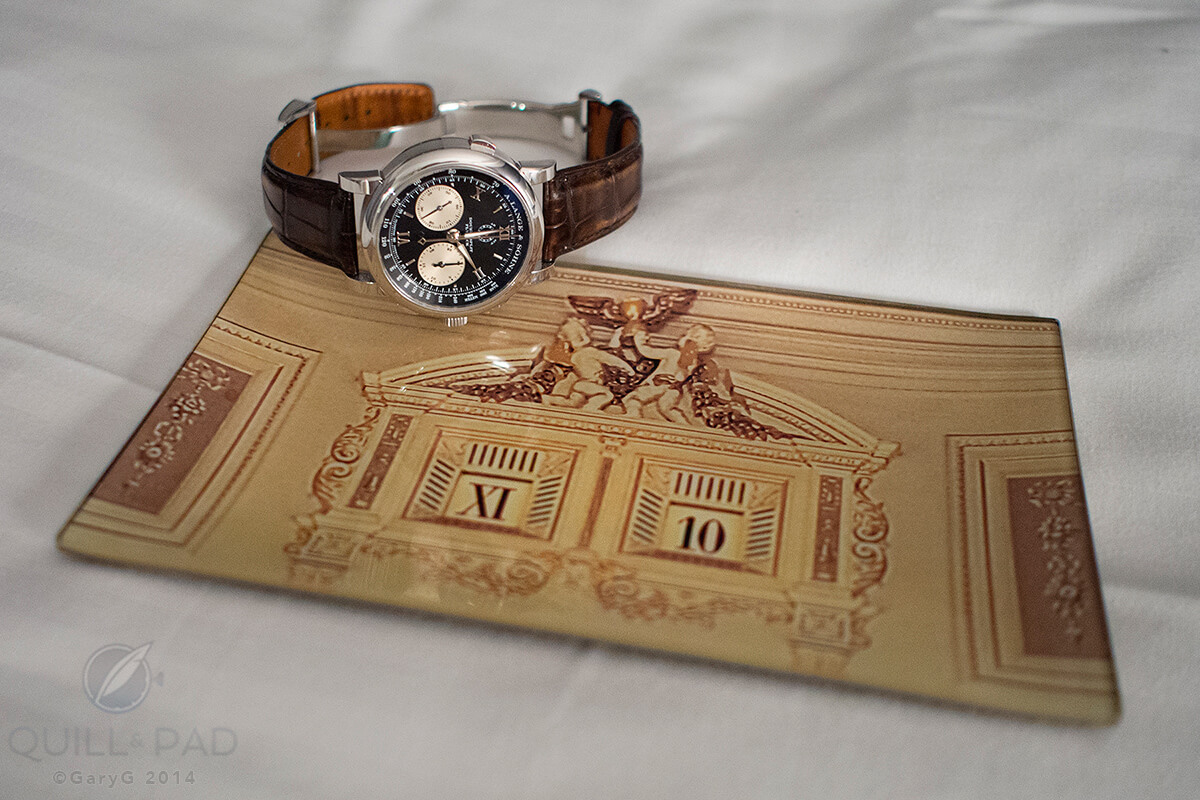
Your author’s A. Lange & Söhne Double Split relaxing in style at the recent opening of the brand’s New York City boutique
One of the great things about these sorts of watches from a collector’s perspective is that they allow you to spend (note I didn’t say “invest”) more on your collection than you could otherwise afford.
But that’s not why I bought this watch. In fact, although I’d been a fan of A. Lange & Söhne’s watches for some time, already owned a Datograph, and had known about the Double Split for a while, it wasn’t at the top of my wish list until “the lunch.”
Our small group of Northern California collector crazies had gathered for one of our regular lunches, this time with a Lange theme. As usual with our group, any theme teases some pretty interesting watches out of members’ safe deposit boxes, and this time was no exception. Pieces like one of the ten “Pisa” Datographs in existence and a rare Lange 1 in stainless steel were being handed around and tried on. The “Pisa” is an edition of ten pieces in platinum cases with both solid and exhibition case backs, a silver dial, and blued chronograph hands; they were made for the Italian retailer of the same name.
For me, though, the watch that riveted my attention didn’t actually belong to any of the members; it was a Double Split that belonged to the uncle of one of our gang. Turns out that “Unc” was in town for the day, met up with our buddy, and – by total coincidence – happened to be wearing a Double Split. He was kind enough to lend it to his favorite nephew for lunch.
It is on such small coincidences that collections can turn! My photos from that day are dominated by the Double Split, and I was soon on the hunt. Shortly thereafter, I found a suitable example at auction, and after some much-needed loving care back at the A. Lange & Söhne manufacture (which I reviewed in some detail in Why You Can’t Afford To Buy Your Watch If You Can’t Afford To Break It) found myself with a like-new Double Split that has been one of my very favorite pieces ever since.
Why I love it
The reasons why I love this watch fall into two main categories: how it looks and what it does. Let’s start with appearances.
· It is indeed mighty! The massive platinum case is both hefty and sculpted in ways that to me communicate a real seriousness of purpose. One example: on the rear bezel, the brand name and serial number aren’t just engraved; they are etched into the bezel in deep relief, providing a striking frame for the movement.
· Speaking of the movement: even if it weren’t a mechanical marvel, it certainly looks the part! The term I’ve heard over and over again from first-time viewers of my watch is that the movement side looks like a “city under glass.” Lange’s practice of building chronograph complications vertically isn’t to everyone’s taste, but I’m a sucker for this sort of deep dimensionality.
· The finishing is both purposeful and beautiful. A term that I sometimes use to refer to Lange’s style of finishing is “vigorous”: those Glashütte stripes on the bridges, for instance, will never be mistaken for the barely-there striping applied by Philippe Dufour. But for me it’s all part of a coherent Saxon style, like the screwed gold chatons that secure some of the jewels. It is especially appropriate for a masculine watch like the Double Split.
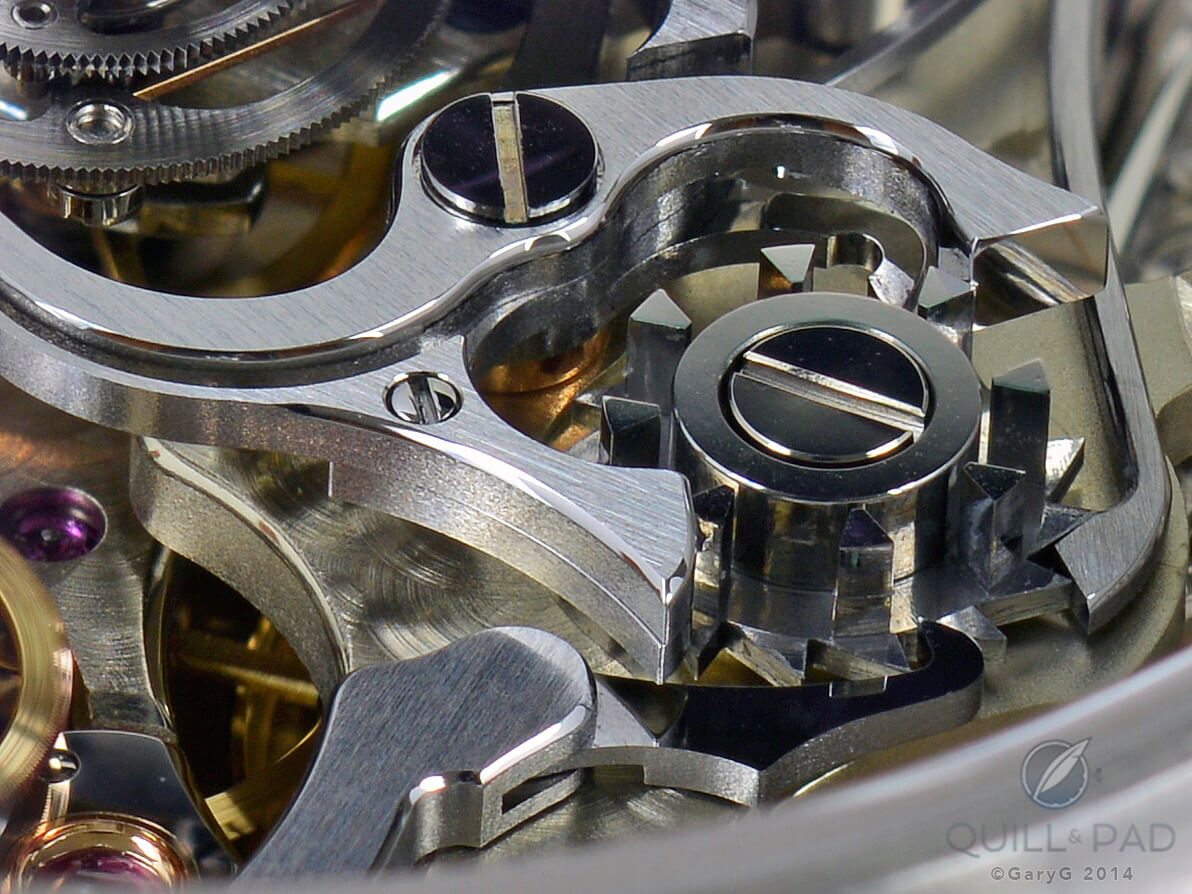
A. Lange & Söhne Double Split movement detail: can you count the number of different finishing techniques?
· A lot of thought was obviously given to the dial side of the watch as well. One thing that you can see when you run the chronograph is that the little diamond-shaped opening at the bottom end of the chronograph second hand perfectly frames the central axes of each of the subdials, including the power reserve, each time it swings over them. Of course, that’s not just a matter of cosmetics; I’m sure it wasn’t that easy to develop the movement architecture so that those three axes were all equidistant from the center of the dial.
· Applied Roman numerals? Check. Pleasantly busy Lange-style tachymeter and seconds track? Check. Luminous dots seamlessly integrated into the outer tips of the applied baton markers for the hours? Check. Even the power reserve, which in pictures looks a bit small, seems in proportion when the watch is seen live.
· White metal, black dial: while the platinum Datograph is perhaps the leading exemplar of this motif, for me the Double Split is very, very close behind.
Love already, and we haven’t even talked about that monumental movement! Let’s see if I can describe all the things that it does:
· It’s a stopwatch.
· Outstanding pusher feel on both the start-stop and return-to zero functions.
· A design that seems to reduce any jumping on start-up or jittering of the chronograph second hand virtually to zero.
· If you wish, it flies back to zero without having to stop the watch and stays zeroed until you release the return button, at which point it begins to record time again.
· Instantaneously jumping chronograph minutes. Not continuously-creeping-along-with-the-advancing-chronograph-second-hand, not even Frédéric Piguet 1185-style, semi-instantaneous changes that creep a bit starting at about 57 seconds and then tick over, but rather crisp, snapping changes perfectly coordinated with the chronograph second hand.
· The A. Lange & Söhne Double Split does all of this not once, but twice! The “split” part is the rattrapante mechanism that uses two chronograph second hands to allow capture of intermediate intervals like lap times; the “double” part is that this same function has been applied to the chronograph minutes as well – the only wristwatch in existence that allows split timing of intervals up to 30 minutes.
And all the while, there’s no drama, no anxiety about whether the hands will snap precisely back to zero when actuated, and no sense of fragility.
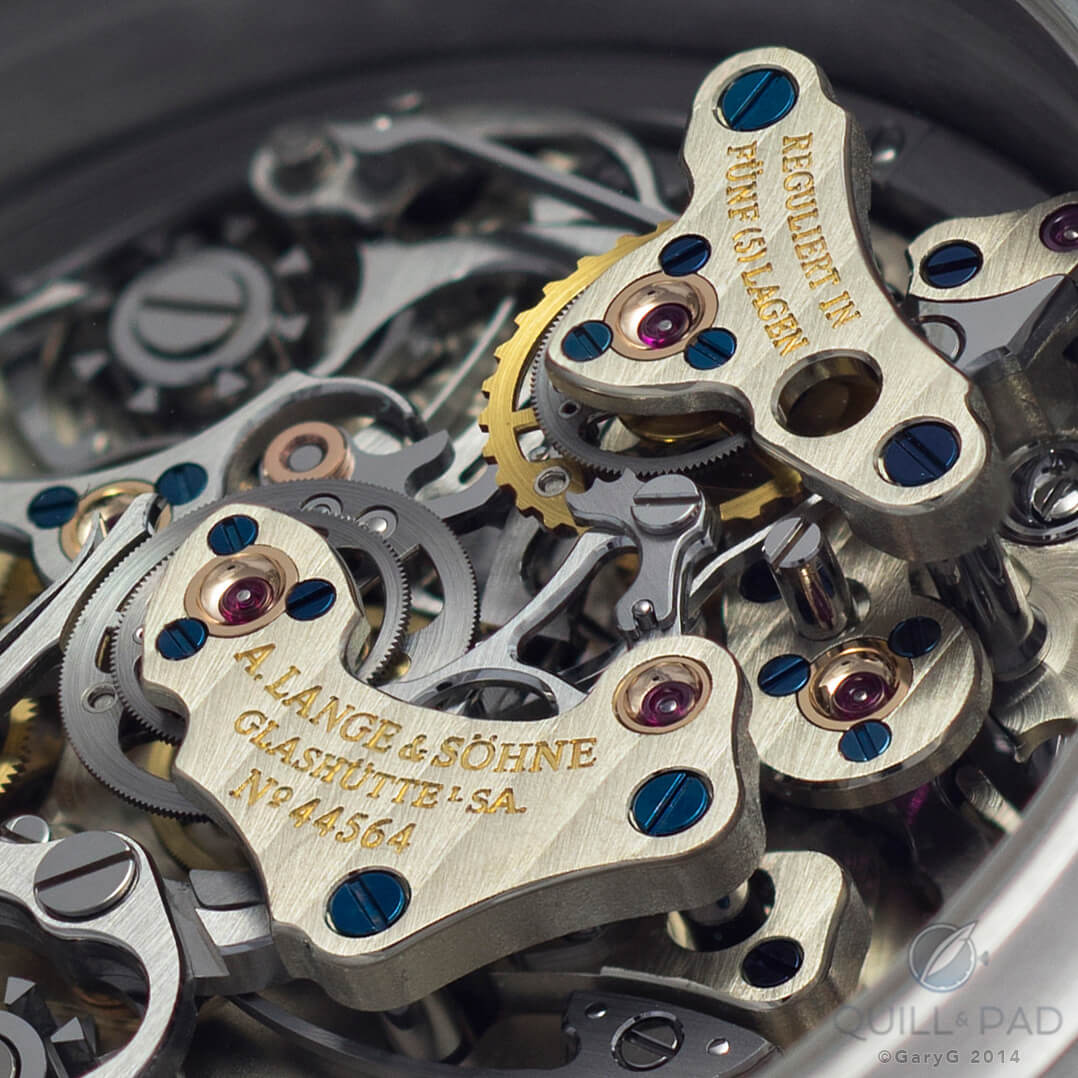
Towers of power: A. Lange & Söhne Double Split assemblies controlling split seconds and minutes, with screwed gold chatons
Is it for you?
So, I’m a big fan, but is this a watch that is suitable for your collection? You might want to consider it if:
· Like me, you view it as one of the great watchmaking accomplishments of our time.
· You either don’t yet have a “dress” chronograph or, alternatively, have a collection that focuses on non-sporting stopwatches like this one.
· You can wear it comfortably. I don’t have a large wrist, but I do have a wrist with a broad and flat top surface; this trait allows me to wear big watches quite well, and despite its heft the Double Split wears beautifully for me.
· You love the way it looks; not just the dramatic movement, but the characteristic Lange-style dial that you will be looking at most of the time.
Happily, not every watch is for everyone! From my experience, you might want to direct your acquisitive energies elsewhere if:
· You try on the Double Split (which you should definitely do before considering a purchase) and its size, weight, or the way it sits on your wrist just don’t suit you.
· You understand all of the potentially interesting things that this watch can do, but don’t see why anyone needs a watch that does them.
· You already have another couple of high-end dress chronographs that you can’t bear to part with, and at the same time have other significant gaps in your collection that you are looking to fill.
My fantasy
To my good friends at A. Lange und Söhne: how about a Dato Double Split? Yes, I know you’ve already told me that it can’t be done for a variety of reasons, but I have faith in you!
Quick Facts A. Lange & Söhne Double Split
Case: pink gold; 43.2 x 15.3 mm; previously produced in platinum with black dial
Dial: argenté (silvered)
Movement: manually wound Caliber L001.1 with 38-hour power reserve, 3 Hz/21,600 vph frequency
Functions: hours, minutes, hacking seconds; flyback chronograph with double rattrapante and precisely jumping minute counters; “up/down” power-reserve indicator
Price: current retail price (pink gold) $128,400; recent auction prices as of 2014 (platinum) $77,000 to $87,000
Production years: 2004 onward
Trackbacks & Pingbacks
-
[…] first-generation black-dialed 1815s featured silver subdials as on the black-dialed Datograph and Double Split, and the switch from silver to black in this updated version makes for a leaner, more dramatic […]
-
[…] watches, it’s usually an opportune time to capture a few wristshots like the wild sight of four A. Lange & Söhne Lange Double Splits in one small space that we captured at a collector event. Here I’d also include the variety of […]
-
[…] article was first published on September 30, 2014 at Why I Bought It: A. Lange & Söhne Double Split. You may find the comments there […]
-
[…] the entire rest of what A. Lange & Söhne creates when it comes to straight-up cool looks. The Double Split still has the most amazing movement, but since you don’t wear a watch upside down I’ll take a […]
-
[…] watches, it’s usually an opportune time to capture a few wristshots like the wild sight of four A. Lange & Söhne Lange Double Splits in one small space that we captured at a collector event. Here I’d also include the variety of […]
-
[…] split-seconds chronographs: 1. A Lange & Sohne Double Split (See Why I Bought It: A. Lange & Söhne Double Split.) 2. Blancpain L-Evolution-R Chronograph Flyback A Rattrapante Grand Date (See Off To The Races With […]
-
[…] Why I Bought It: A. Lange & Söhne Double Split by GaryG. […]
Leave a Reply
Want to join the discussion?Feel free to contribute!

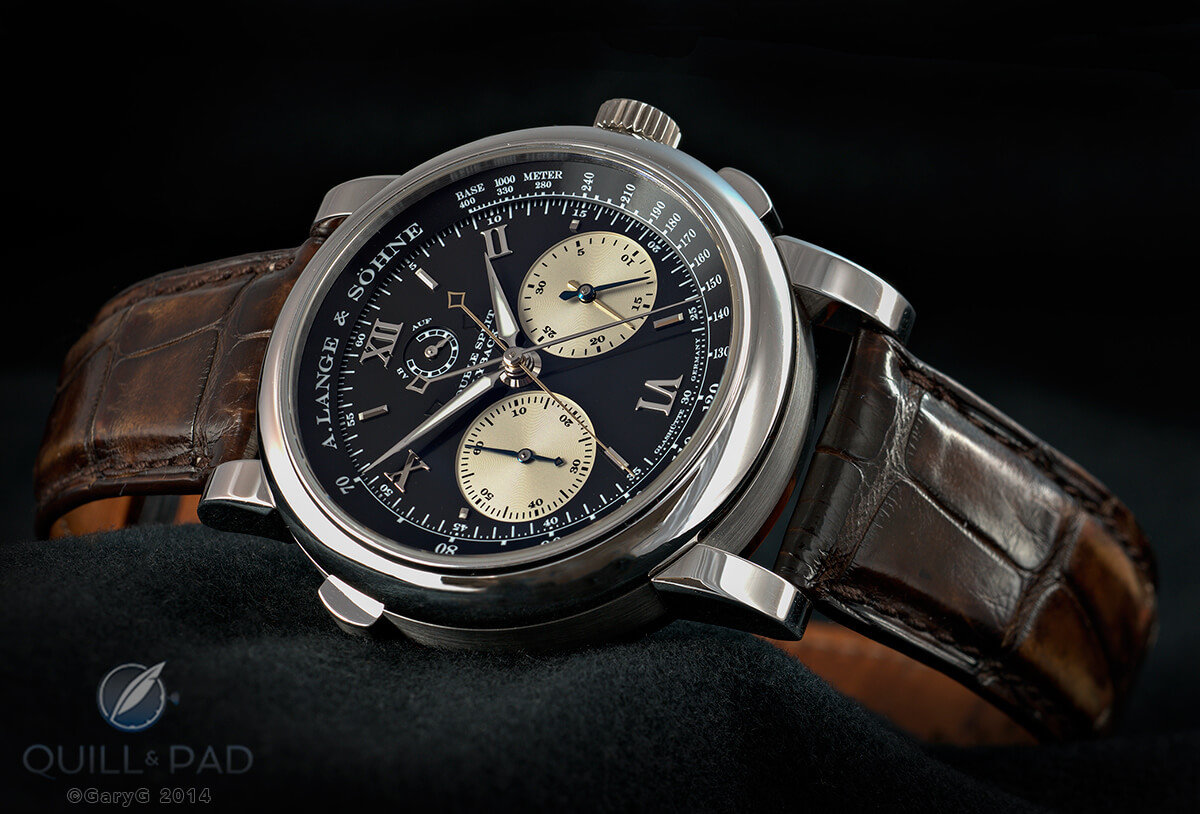
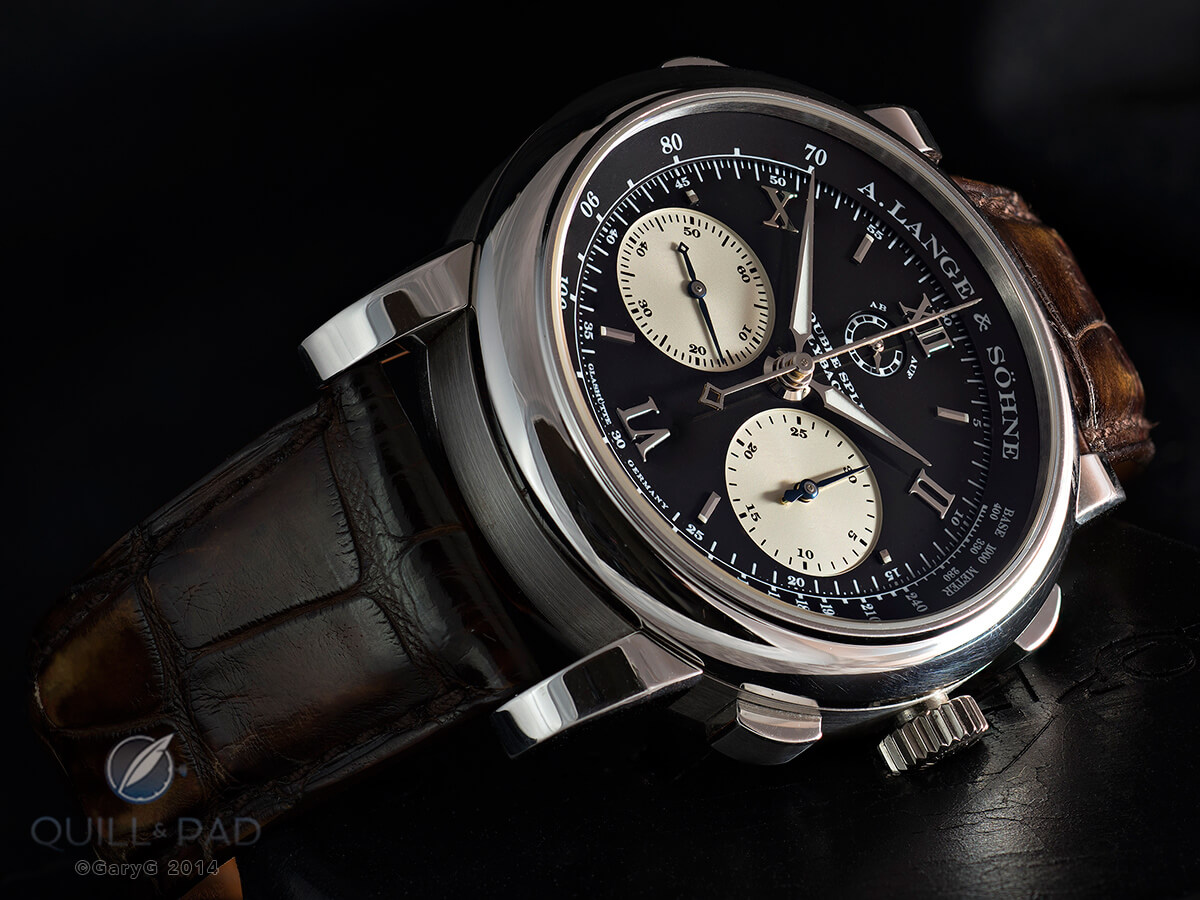

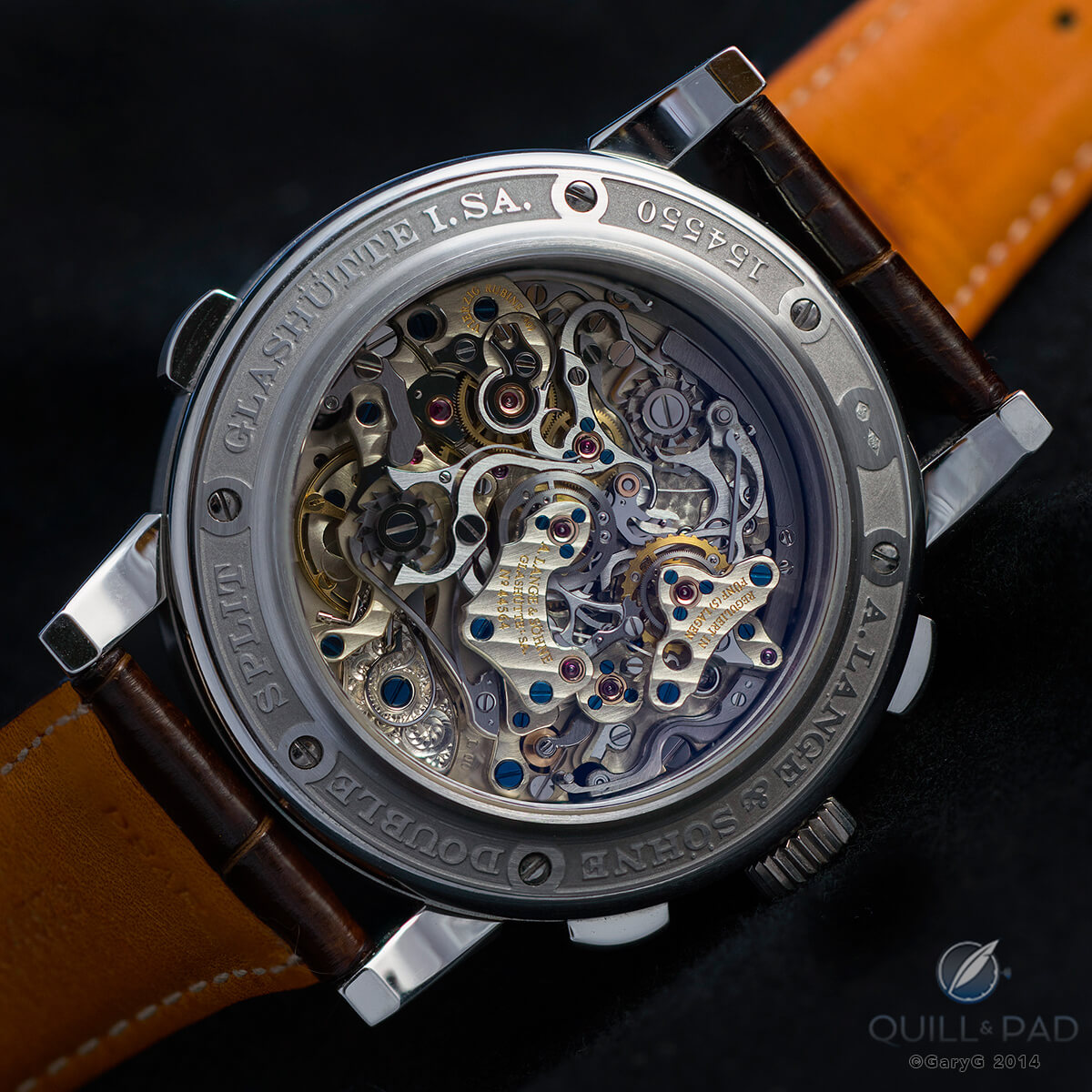
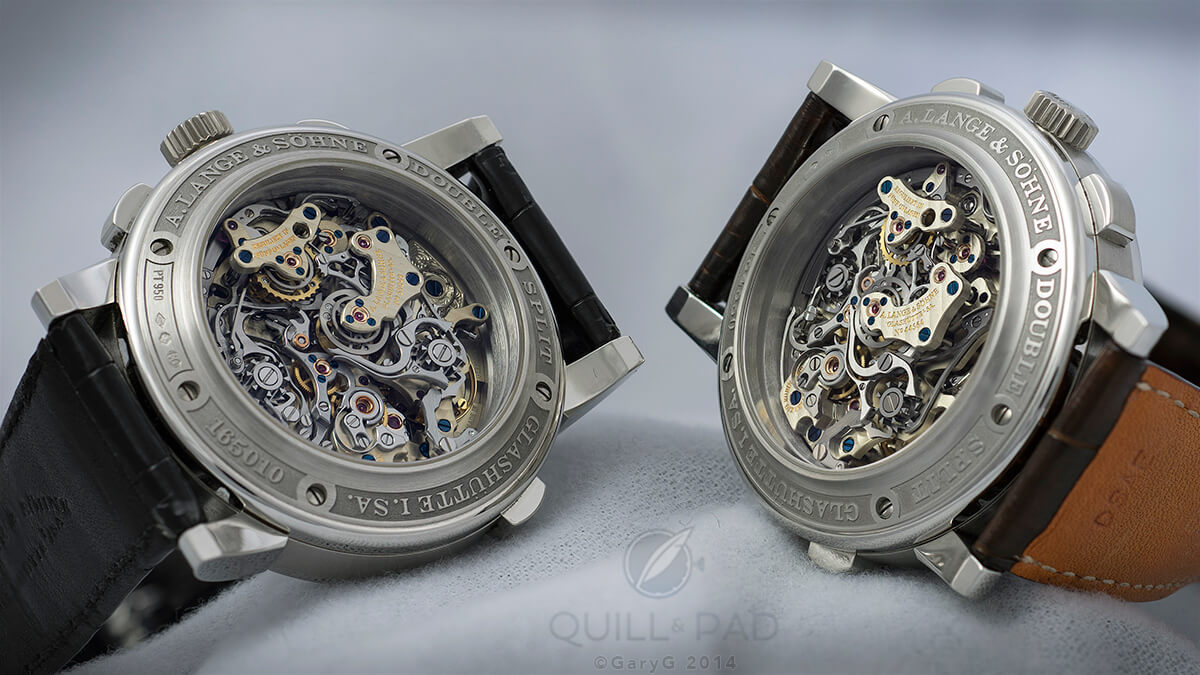
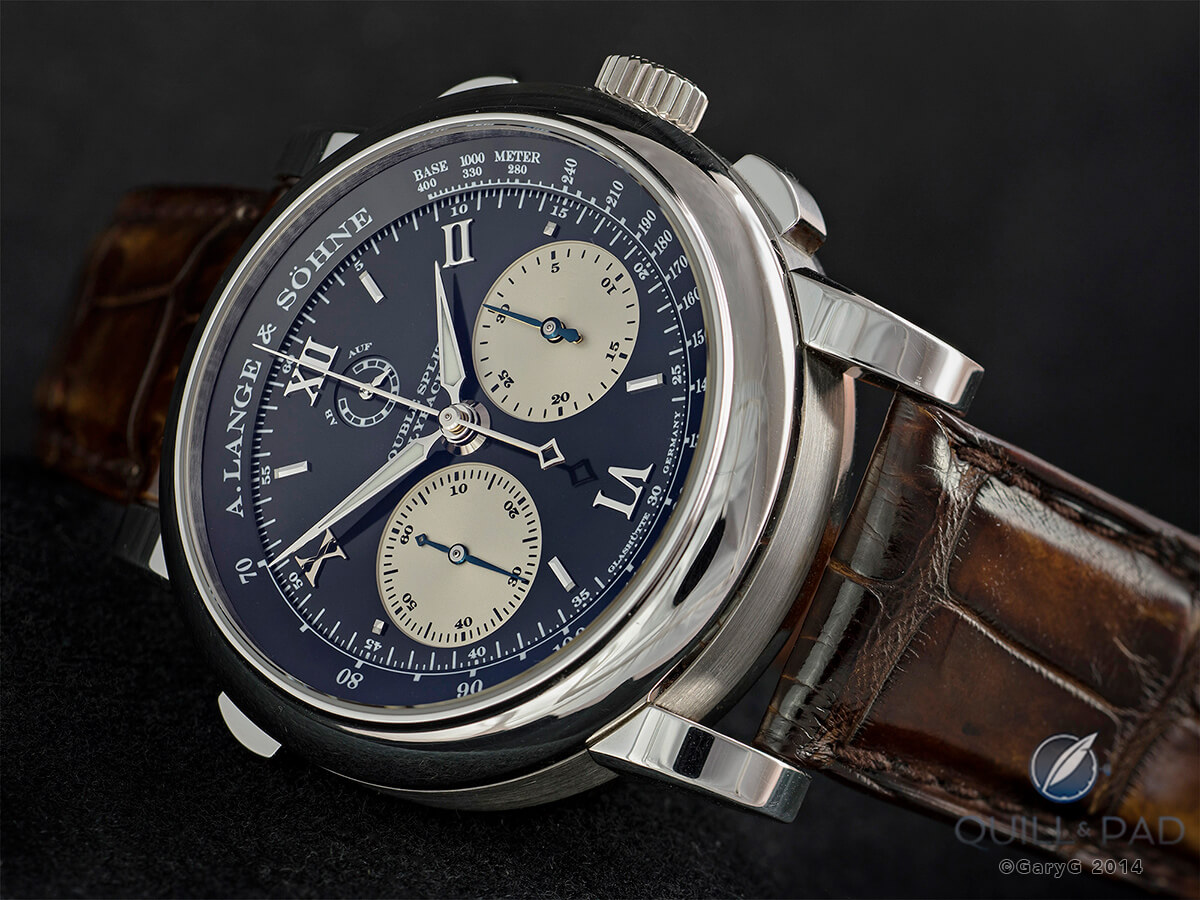
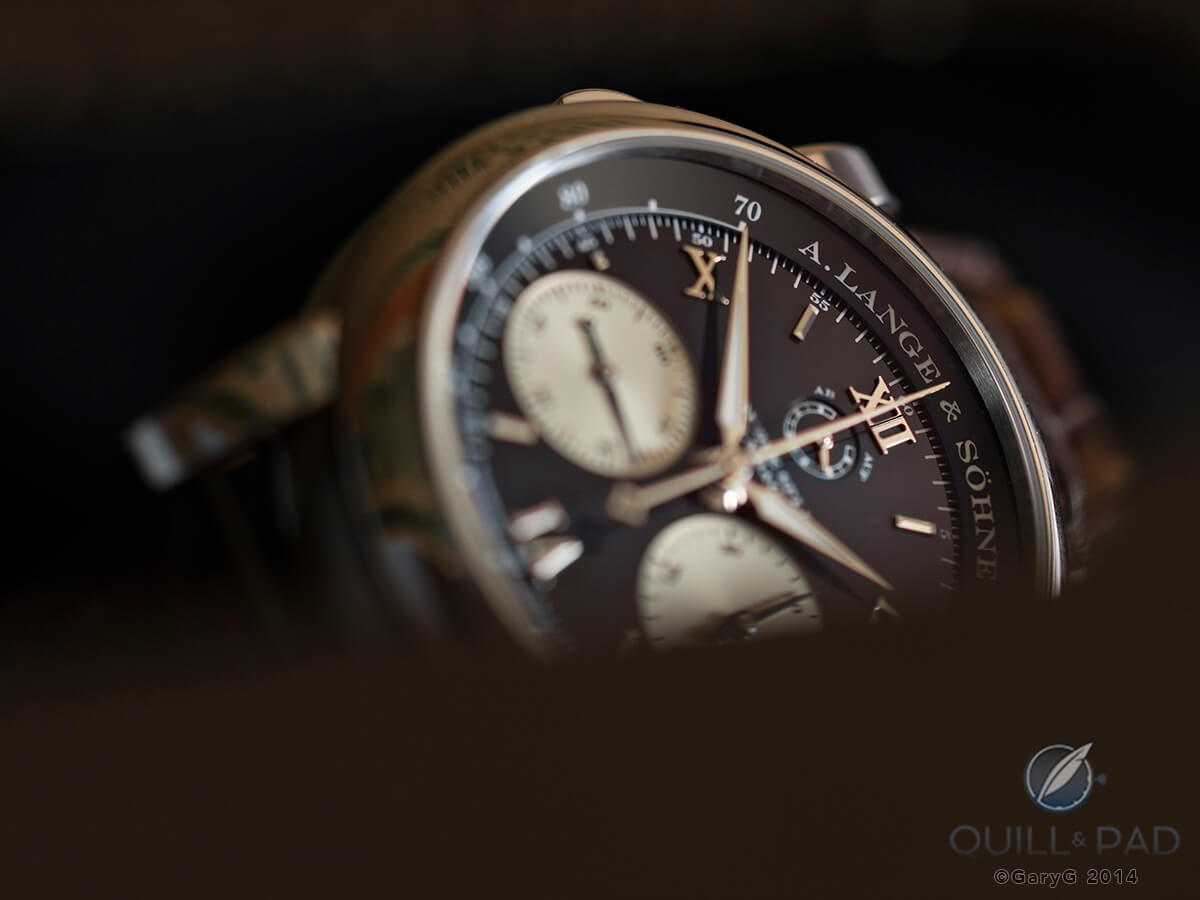
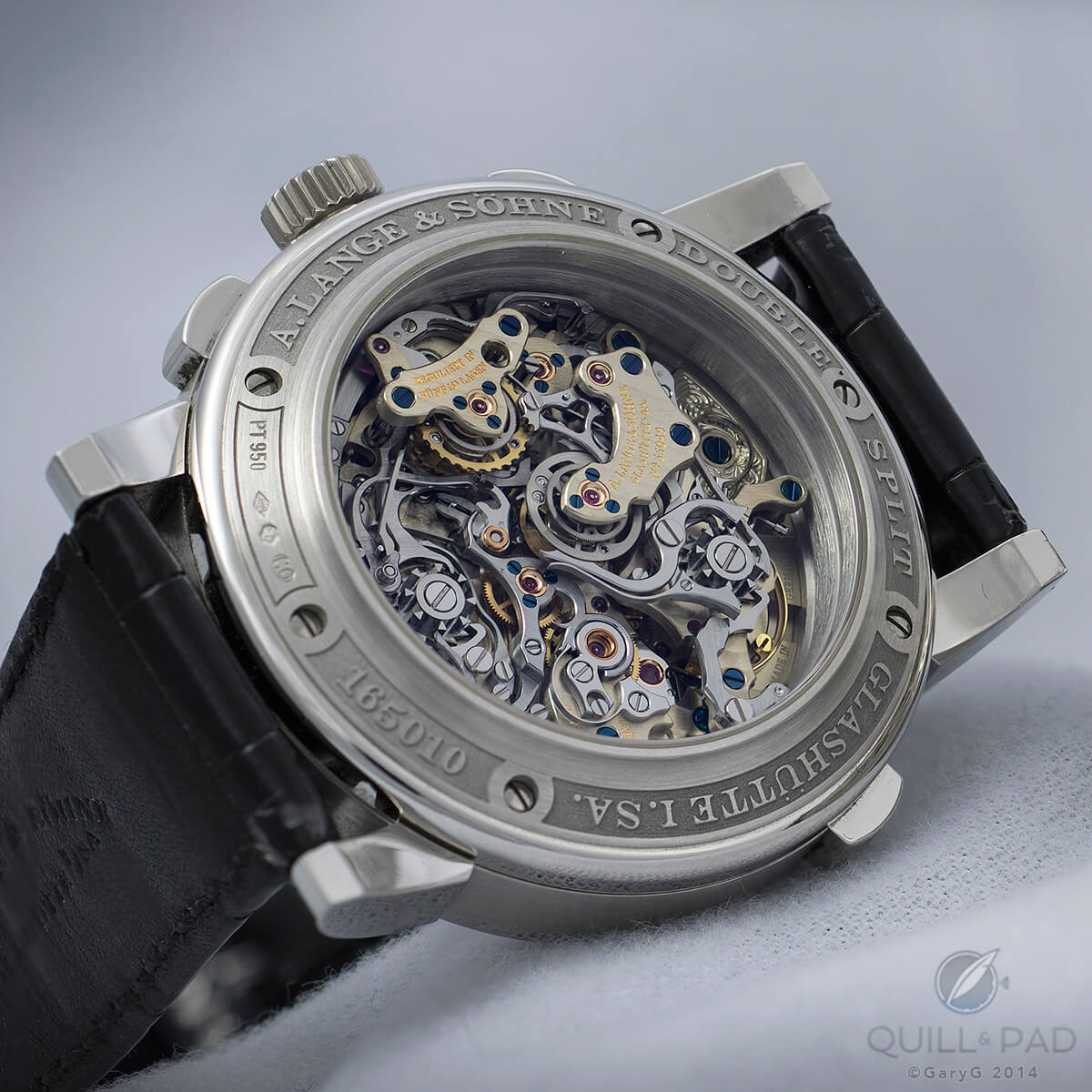


Gary, I just have to reiterate how superb these photos are! Bravo!
Thank you so much, Elizabeth! I recently spent a half-day in my home photo “studio” working in person with my photography teacher, the great Ming Thein, and I thought the improvement was immediately apparent but wanted to see what others thought!
Gary,
This is the story I’ve been waiting for! The thoughts behind the purchase are a major driving factor in my love of watches, and reading both your opinions and story behind the DS was a true pleasure. I find it fascinating how Lange can create such a technical masterpiece, yet design it in such a way that allows it to remain stealthy to all but a few.. until you turn it over of course.
Excellent photos, I love the brooding giant shot near the end.
This is one which has grown in popularity since its introduction don’t you think? Even more-so after the Pt version was discontinued.
One I have wanted to handle for years, but only lucky enough to see the RG version.
Best, Colton
Glad you enjoyed it, Colton!
I agree that this watch has grown in popularity over time, and perhaps even more so since the PT version was discontinued. I have to give credit to my friend and fellow Double Split owner Edwin H. for helping to popularize this watch, and hope that over the past few years my words and photos on this piece have helped to fan the fires as well.
You can expect to see more on Lange from me in the future, to be sure!
Best,
Gary
Thanks for sharing, Lovely photographs! I love A. Lange & Sohne, I think they are the best watchmakers on the planet. This piece is a triumph of mechanical engineering. Thanks for explaining how it works. Alas, I can only admire from afar.
Thanks for taking the time to comment, Richard! As you can tell, I am a big admirer of Lange myself, and of this piece in particular.
Thanks also for the kind words on my photos — I am enjoying macro photography more and more, and will be sharing many more photos on Quill & Pad in the coming months.
Wait wait wait…. You mean to tell me that you have met people on the planet earth, who have seen Lange’s chrono vertical movements and thought… ‘Meh’???? Really? I am shocked!! At watches and wonders in HK last week I had the chance to see the movement of the dato and the DS side by side and there was a significant difference… As the lovely lady explained…. The DS movement has two chronos…. So if you loved the Dato, the DS movement sends you over the edge…. Ah if only it was the dato size…
Amazingly enough, Imran! I’ve talked with some PP and VC devotees who make much of those brands’ more “horizontal” chrono constructions. I have to confess that those are beautiful as well, but for me it’s deep dimensionality every time.
Completely agree that the DS is one level over and above the Dato, which could hardly be believed if you had only seen the latter!
Thanks for your note — I’ll hope to see more comments from you here in the future.
Gary,
Could you please explain further how “one of the great things about these sorts of watches from a collector’s perspective is that they allow you to spend (note I didn’t say “invest”) more on your collection than you could otherwise afford”.
How does one actually do that? Either one has the money to purchase the piece (investment grade or not) or one doesn’t. Is there anything I am missing here? Certainly eager to better understand, as I suspect I might have more than a few things to learn from you!
Thanks in advance,
Claude
P.S. Gorgeous watch and very skillful, crafty photography! Thank you for the awesome shots of a stunning piece!
I’m planning a longer article on this sometime in the next months, but if most of one’s collection is made up of watches with established and stable values on the pre-owned market it should be possible to build a fairly large collection while limiting the downside risk on valuation.
For instance, the value of the Double Split at auction and in private sales among collectors has been flat to slightly up over the past three years — so if I sold my piece now, I’d get out with zero “spending” and would have had three years of wearing enjoyment.
When I say “afford,” I’m not talking about having the funds to buy the watches — I’m talking about the net loss that one takes during the period of ownership.
Hope that clarifies it at least a bit!
Gary,
Thank you for this. This is indeed a perfectly clear response. In other words, what you mean is that if you pick and choose your watches correctly, you are basically getting them loaned to you for “free”, so all you lose is the value of the inflation over the amount spent, the liquidity of the amount spent, and the potential ROI on that money that you spend on the watch.
In your opinion, would a recent Audemars Piguet Jumbo (15202) belong in this select category of watches, or would the depreciation on it be too much for it to belong in there?
Thank you again. It is great to have people with so much experience sharing it so clearly with the public in this manner!
Best regards,
Claude
My pleasure, Claude! It’s great to hear that the “collector” perspective that I bring to Quill & Pad is useful to you.
Sad to say, I really don’t feel qualified to give an opinion on the Jumbo, as with the exception of one Jules Audemars watch I’m not a collector of the AP line. My advice to you would be to go to a couple of the big online watch forums and look at the asking prices for these watches over the past several years — that should give you a sense for how the pre-owned pricing level has moved, if at all.
Overall, though, once a version of a popular watch line (with the Royal Oak as a pretty good example, and the Rolex Daytona maybe even better) has established a trading value, it can indeed be stable over time — I just don’t want to lead you astray on this particular watch, as it wouldn’t be my money on the line!
Best,
Gary
Nice article Gary! Having recently bought my Platinum DS I can certainly vouch for all the comments you made. It is indeed ” mighty”! The interesting thing is watching people’s reaction to it. Even those that perhaps are not so horologically inclined, seem to fixate their gaze on the watch when I wearing it! I guess the sheer presence of the watch does beguile some people. But as you have a stated above it is a wonderful watch and I’m very pleased with my purchase.
Many congratulations, Alex! I agree — this is a watch with real wrist presence that draws (the right kind of) attention, even from people less-obsessed with watches than we are.
I hope that you continue to enjoy wearing your Double Split; it certainly maintains a regular position in my wearing rotation, and I always smile when I see it on my wrist.
Dear Gary,
Superb article! DS has always been one of my holy grail watches. Can you tell me if the brown watch strap you have on your DS is a Lange strap or did you purchase elsewhere?
Thanks,
Dan
Hi Dan — sorry to be so slow to respond! I don’t monitor responses to these less recent articles the way I should…
The strap you see is actually one of the Santoni straps made for IWC and available through the IWC boutiques. Happily, the width of the strap at both the lug and buckle ends matches the Double Split’s dimensions — and that “antiqued” brown look is, to my eye, just killer with the black/white contrasts of the watch and touch of yellow patina on the DS dial.
No worries! Thank you for your response. I completely agree with you.
It is a wonderful watch, which I found when discussing Zenith Rattrapante at the Watchuseek forum (http://forums.watchuseek.com/f27/zenith-rattrapante-kinds-uses-3728458.html).
I was wondering for the minute hand for the rattrapante. And so it got it, the only watch in the world to have it — however, Zenith got the automatic. Which means that the ultimate coup would be to have both! Now that’s what I’d ask for. However, I’ve realized from your excellent article that the full view of the mechanism is great, and the automatic would obscure that. If only they’d make a the self-winding rotor from Gorilla glass…
Absolutely, the best article about the mighty Double Split on the internet.
This is probably my sixth or seventh time reading this, and it’s equally impressive each time. When I took the double split in my hands, I appreciate even better, thanks to your photography and article.
Best,
Alp
Thanks very much, Alp — I’m tremendously pleased that you enjoy the words and photos enough to keep coming back!
Best, Gary